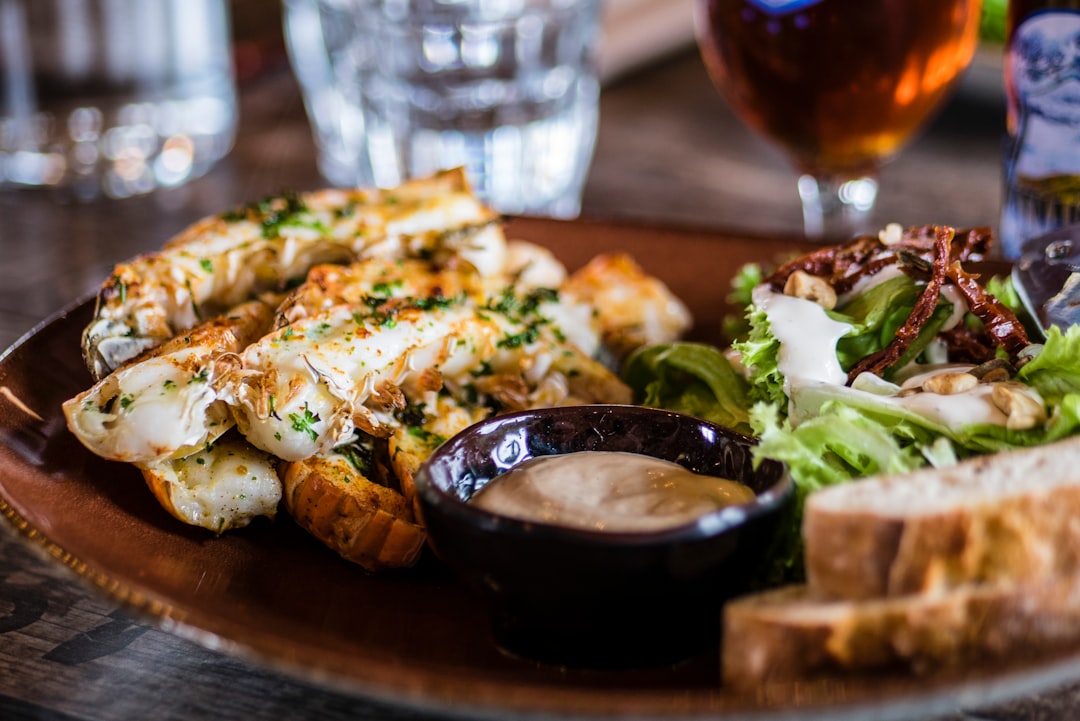Chasseur sauce
Composed of a medley of flavorful ingredients, the basis of chasseur sauce is delectably simple. Rich and savory tomatoes, velvety shallots, and a touch of zesty white wine gracefully coalesce into a rarefied brown sauce that’s chock-full of savoury goodness. But what truly sets this condiment apart from its peers lies in the addition of fragrant herbs like thyme, parsley and bay leaves, which add an enlivening hint of aroma to the mixture’s nuanced blend.
The dish easily lends itself to being customized in order to suit various palettes. For those seeking out a more conventional flavor, a splash of robust brandy can accentuate the already indulgent profile of the sauce. For the more daring, a jolt of hot pepper or a pinch of cream will profoundly amplify both texture and flavor.
Most commonly paired with succulent cuts of meat, chasseur sauce maximizes the taste experience of dishes such as beef Wellington or pork tenderloin. Its depth adds a quixotic dimension to any culinary endeavor that it’s featured in.
In terms of getting the best out of your chasseur sauce, let it simmer and reduce until it’s thick and glossy—this will ensure that every bite is texturally consistent and sensational in flavor.
Ultimately, chasseur sauce reigns as an exceptional sidekick to many popular dishes, extending an aura of finesse that easily elevates any dining experience. Unforgettable and exquisite, this luxurious ingredient is the perfect gastronomic companion for any special occasion.
Chasseur sauce recipes
Amazing Chasseur sauce recipes sourced from the web.
The origin of Chasseur sauce
It is hard to pinpoint the exact origin of the delectable dish known as chasseur sauce. Over the centuries, diverse cultures have laid claim to its invention, each holding tight to their own cultural interpretation of this scrumptious sauce.
Many food historians speculate that chasseur sauce originated in France during the late 18th century. Its main ingredients include onions, mushrooms, shallots and a variety of herbs, giving it a unique and intense flavor. It is thought that the French name, chasseur, meaning "hunter", was given as a nod to the dish's game-inspired flavors.
This classic French concoction has made its way to other countries, including the United Kingdom and the United States, where chefs have found unique ways to utilize its flavor profile. In the UK, chasseur sauce is often served with steaks, a hearty outdoor meal that combines the robust flavors of game meat with the aromatic notes of mushroom, onion and herb. In the United States, it is popular to serve chasseur sauce with chicken, a dish that is sure to be a hit with any crowd.
Regardless of its origin, chasseur sauce has become a beloved condiment around the world. Its signature taste enhances the flavor palette of any dish. Its robust flavor adds depth, complexity and a certain je ne sais quoi to any meal. We can only imagine the delight that the original chasseur sauce creators must have felt upon tasting their culinary creation for the first time!
Types of Chasseur sauce
.
When it comes to sophisticated and savory French cooking, few dishes can compare to that of the beloved Chasseur Sauce. This classic French preparation is a must-have for anyone looking to really add some luxuriance to their meal while still keeping it delectable and memorable. Whether you're using it to smother chicken, fish, or other more exotic treats, the incredible flavors and textures of Chasseur Sauce are sure to take your taste buds on an epicurean journey.
So, what exactly is Chasseur Sauce? Typically, it is a rich and creamy sauce composed of shallots, mushrooms, white wine, butter, parsley, thyme, and tomato paste. Each of these ingredients work together to bring out wonderfully complex yet subtle flavors which will make any dish that much more tantalizing. But that is not all.
The beauty of Chasseur Sauce is its versatility. You can modify it as much as you want to fit whatever dish you are working with. For instance, if you are trying to accentuate the natural flavors of a fish dish, you can omit the tomato paste and provide just a hint of lemon juice while still keeping the herbal elements that define it.
On the other hand, if that same dish is featuring chicken, you can really up the amount of tomato paste used in order to give it an extra boost of flavor and provide additional body to the recipe. No matter what variations you decide to use, you can rest assured that the end result will be a truly flavorful and exquisitely balanced dish.
Finally, you can also vary your Chasseur Sauce depending upon the method of cooking you are using. For example, when using a slow cooking technique such as braising, you can add a splash of brandy or cognac at the end to provide a spectacularly silken texture and intensely earthy taste. If, however, you plan on grilling or sautéing your ingredients then you can add a lower-alcohol element such as dry vermouth and keep the parsley and thyme for a livelier finish.
At the end of the day it all comes down to personal preference; but you can be certain that whatever variation you chose, your Chasseur Sauce will make your meal something special.



